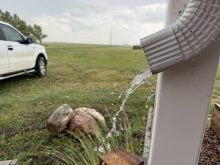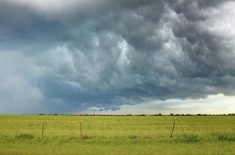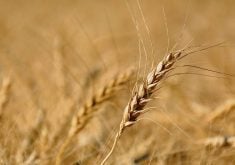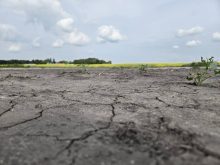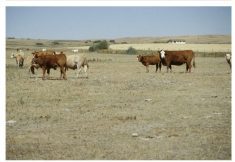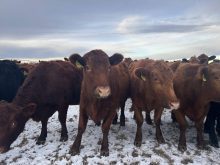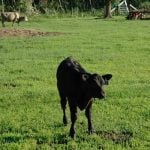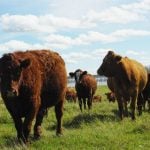Recent rain has prevented a disaster for many farmers, but additional moisture is needed to sustain crops and pastures through summer.
“It’s actually lightened the mood quite a bit around my area,” said Jason Hale, vice-chair of Alberta Beef Producers, who ranches near Bassano. “But in saying that, we’ve been so dry that it’s going to take a lot to replenish the soil moisture that we lost in the last year and a half.”
The rain is a good start for ranchers and grain farmers who are hoping to avoid another disaster, said Hale. This year’s drought was shaping up to be worse than last year, he said, adding some farmers must still make tough choices about herd reduction.
Read Also
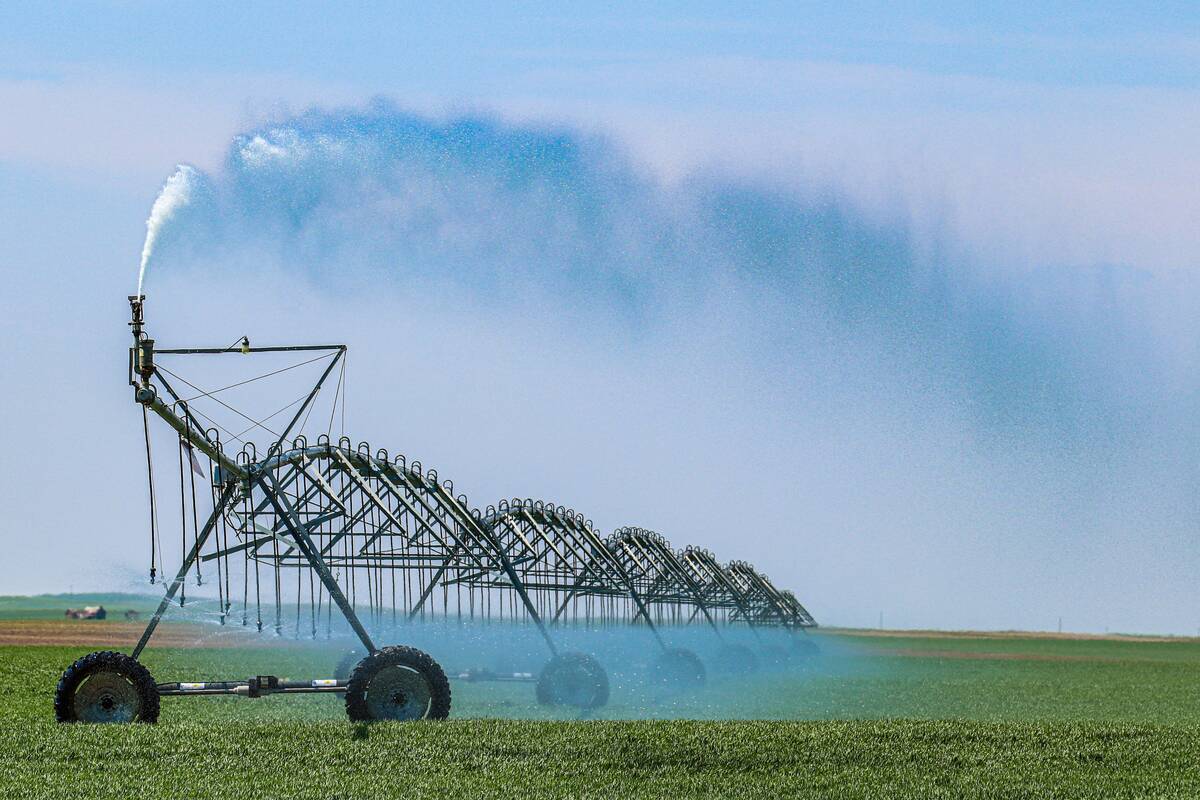
Irrigation capacity questioned
Some are highly skeptical that Canada could massively expand irrigation in Saskatchewan and Alberta so that 10 per cent of Canada’s farmland is irrigated.
“By no means are we out of the woods yet,” he said.
There was significant rain in southern Alberta over the first two weeks of June — good news for the driest part of the province, said Trevor Hadwen, an agroclimate specialist with Agriculture and Agri-Food Canada.
More rain is expected before July, he said, noting the challenge is receiving all the rain at once. When that happens, moisture may not penetrate the soil.
“We certainly are recharging that topsoil moisture,” said Hadwen. “We certainly are going to be benefiting from it from an agricultural point of view, but our reserves are still not replenished.
“And when we start to get that hot, dry summer weather, we are going to end up with periods where the crop doesn’t have very much moisture unless we continue to get these weekly or biweekly rainfall events. We just don’t have that moisture in the deeper soil.”
Mountain areas in southwestern Alberta saw the largest amounts of rain from June 12-15, said Sara Hoffman, a meteorologist with Environment and Climate Change Canada.
More than 210 millimetres of rain fell in Kananaskis while between 100 and 120 millimetres fell west and southwest of Calgary. And the amounts continued to taper off as you headed east. Drumheller and areas west received between 60 and 80 millimetres of rain. The region encompassing Medicine Hat, Brooks and Oyen received just 20 to 40 millimetres. Lethbridge and areas west received significant precipitation. Rain amounts dropped off north of Edmonton.
Alberta will be affected by La Niña weather patterns this summer, said Hoffman.
That means cooler, wetter weather — at least in theory.
“That’s part of what we are seeing and that’s what our long-range summer forecast is — for a little bit cooler than normal and a little bit wetter than normal,” said Hoffman.
“That being said, our summer forecast is heavily skewed by June. We are more accurate in the shorter term, so it could be that July and August are a little bit less extreme than June. We’ll have to wait and see how that shakes up.”
Drought conditions in southern Alberta are localized, with some areas still extremely dry, said Stuart Chutter a product co-ordinator with Agriculture Financial Services Corporation.
And virtually no one in the south is out of the woods.

“I think that’s kind of the key story of the south,” said Chutter. “Ninety-one per cent of subsoil moisture is rated poor to fair. Soil moisture below six inches is depleted in the south. Following last year, there are no reserves to draw upon, so these rains are so necessary.”
Still, some parts of the south have now received above-normal season-to-date precipitation, he noted.
Moreover, moisture is soaking into soil as opposed to washing out crops, he said. Credit goes to producers’ good soil management practices — no till, residue management, minimal disturbance and ground covering, he said.
“These practices are so important when rainfall is coming in large amounts in such quick time frames,” he said. “Soil that’s able to capture that and hold it quickly is what’s needed for resilient crops.”
Because of cool, dry spring conditions, many farmers were ahead of the curve for seeding, said Chutter. But emergence and early-spring growth were delayed in some regions and big questions remain about whether those crops can rebound from that.
“Are plants ready to go now, or were they stressed too much too early in the season?” he said. “Going back to subsoil moisture reserves, continuous rainfall events throughout the season are going to be important. For the bulk of the south now, there have been significant rainfall events. But there’s very little buffer zone where plants have available moisture to continue to grow if precipitation doesn’t continue.”
Last year, Agriculture Financial Services Corporation paid out a record $2.7 billion to cover insured crop losses. Another $350 million went to livestock producers to help them partly cover extraordinary feed costs.
The cost of feed remains sky high and that, along with other soaring input prices, is putting producers under enormous pressure despite the rain, said Hale.
“What’s the cost of feed going to be?” he said. “The price of grain is still high. It’ll continue to be high because of the shortage around the world.
“What is the price of hay going to be? I’m hearing $300 a tonne. Hay has barely started to grow in a lot of areas. That’s going to be a huge factor in determining how many cattle producers keep.”



